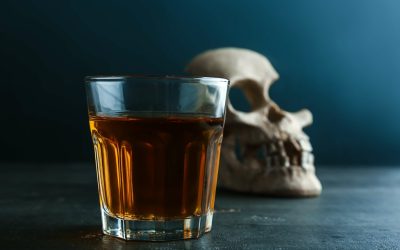While AB is difficult to model in rodents, much is known about Pavlovian conditioned responses to reward-predictive cues. For example, mesolimbic dopamine projections from the ventral tegmental area (VTA) to the NAc play https://ecosoberhouse.com/ a critical role in both Pavlovian conditioning and the expression of conditioned responses [16, 17]. In addition, fast dopamine release events (dopamine transients) commence at the onset of a conditioned cue [18, 19].
Opioid peptide antagonists would interfere with this process, thereby reducing dopamine release. Dopaminergic neurons that relay information to the NAc shell are extremely sensitive to alcohol. For example, in studies performed in rats, alcohol injected into the blood in amounts as low as 2 to 4 milligrams per kilogram of body weight increased dopamine release in the NAc shell and maintained chronic alcohol self-administration (Lyness and Smith 1992).
Subjects
In a second experiment, both groups of rats were able to self-administer cocaine for two weeks, then detoxed for 21 days. When the rats returned to the cages in which cocaine was available, those receiving antibiotics headed to the lever that originally dosed cocaine twice as quickly as the other rats did. These proteins can then reach the brain, either through the vagus nerve or by crossing weak areas in the blood–brain barrier, a layer of cells meant to protect the brain from damage.
Our findings with blockade of β2-containing nAChRs resemble previous findings in rodent striatum both with respect to antagonist inhibition and decreased inhibition at higher/phasic stimulation frequencies. Thus, the cholinergic contribution to dopamine release is conserved in primate striatum. We further explored the effect of long-term ethanol consumption on striatal cholinergic systems by examining gene expression of several nAChR subunits (α4, α5, α7, and β2) and markers for cholinergic interneurons (ChAT and vAChT).Replica Breitling navitimer
Got Brain Fog? Here’s How Alcohol Affects Your Dopamine and Reward System.
For example, in mice, chronic alcohol exposure decreased the excitability of OFC outputs to the DMS [96], and alcohol-induced synaptic plasticity in the OFC has been linked to excessive alcohol use in both mice and monkeys models [97,98]. In addition, using a combination of activity dependent genetic tools and chemogenetic manipulations, a small ensemble alcohol and dopamine of mPFC neurons was shown to serve as a memory to cue induced relapse to alcohol use [99]. Interestingly, like the molecular mechanisms that gate the development of AUD [3], STOP mechanisms also occur on the level of circuitries [100]. Specifically, a subset of infralimbic cortical neurons serve to protect against relapse to alcohol use [100].

There’s a popular misconception that people experiencing addiction are actually addicted to dopamine, rather than drugs or certain activities. Male and female rhesus macaques (Macaca mulatta; 5.5–8.5 years old at study onset) obtained from the Oregon National Primate Research Center were used in the current studies. All procedures were conducted in accordance with the NIH Guide for the Care and Use of Laboratory Animals and approved by the Oregon National Primate Research Center Institutional Animal Care and Use Committee.
Level 1: Genetic factors in AUD
Therapy sessions will teach you coping techniques to deal with the triggers that fuel drinking. You may also receive treatment for depression at the same time, as it is one of the primary withdrawal symptoms. Dopamine release in the NAc shell may be instrumental in the development of alcohol dependence.
